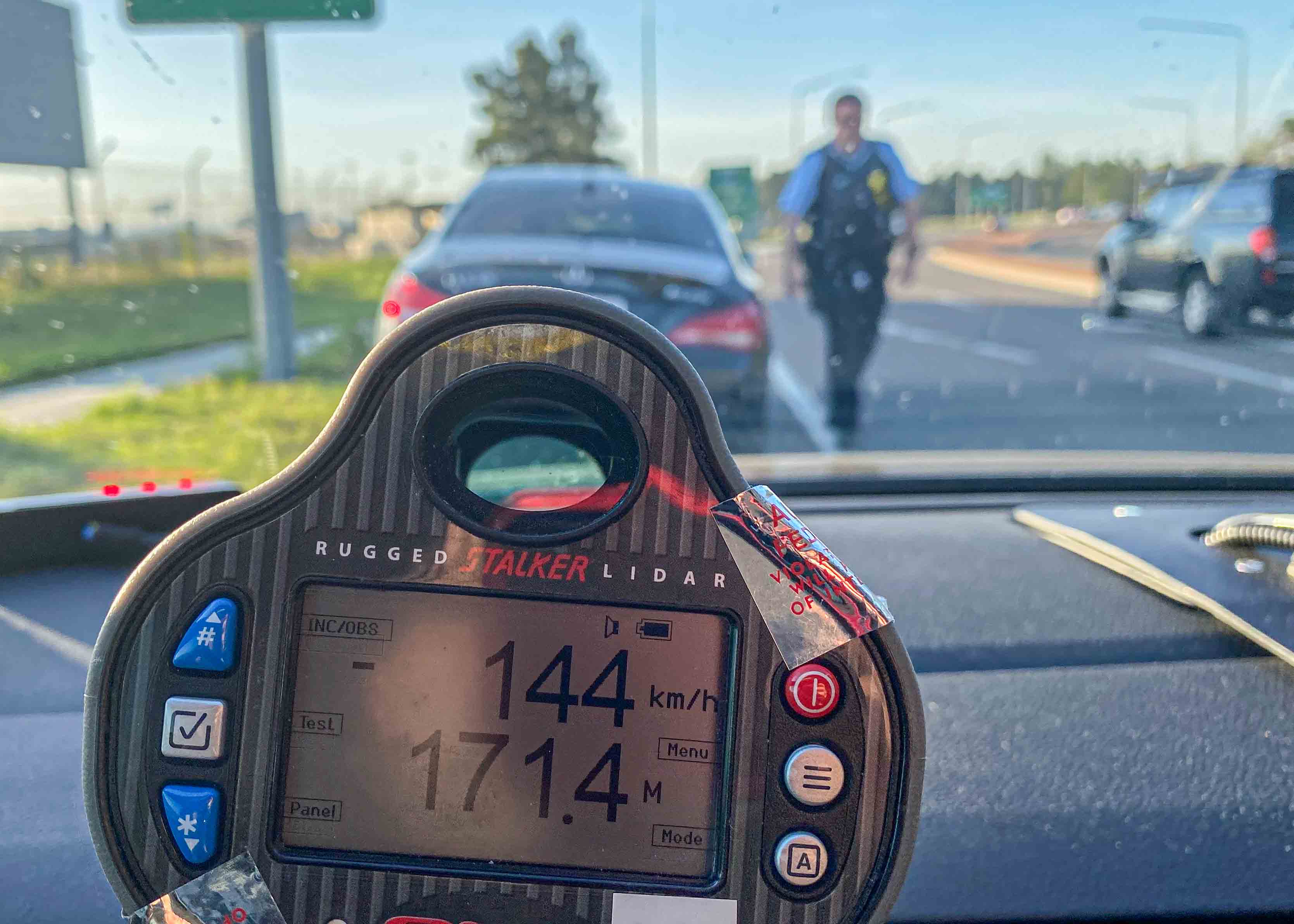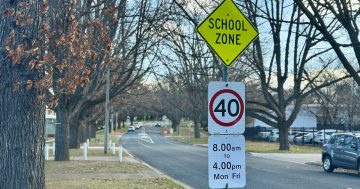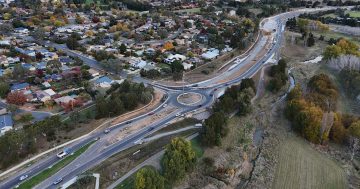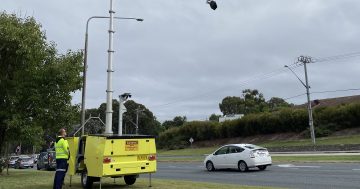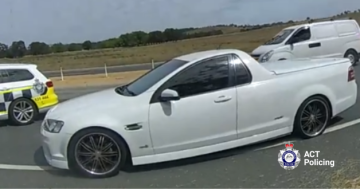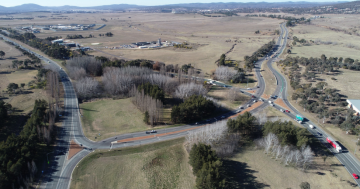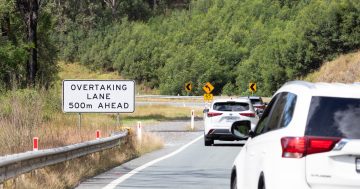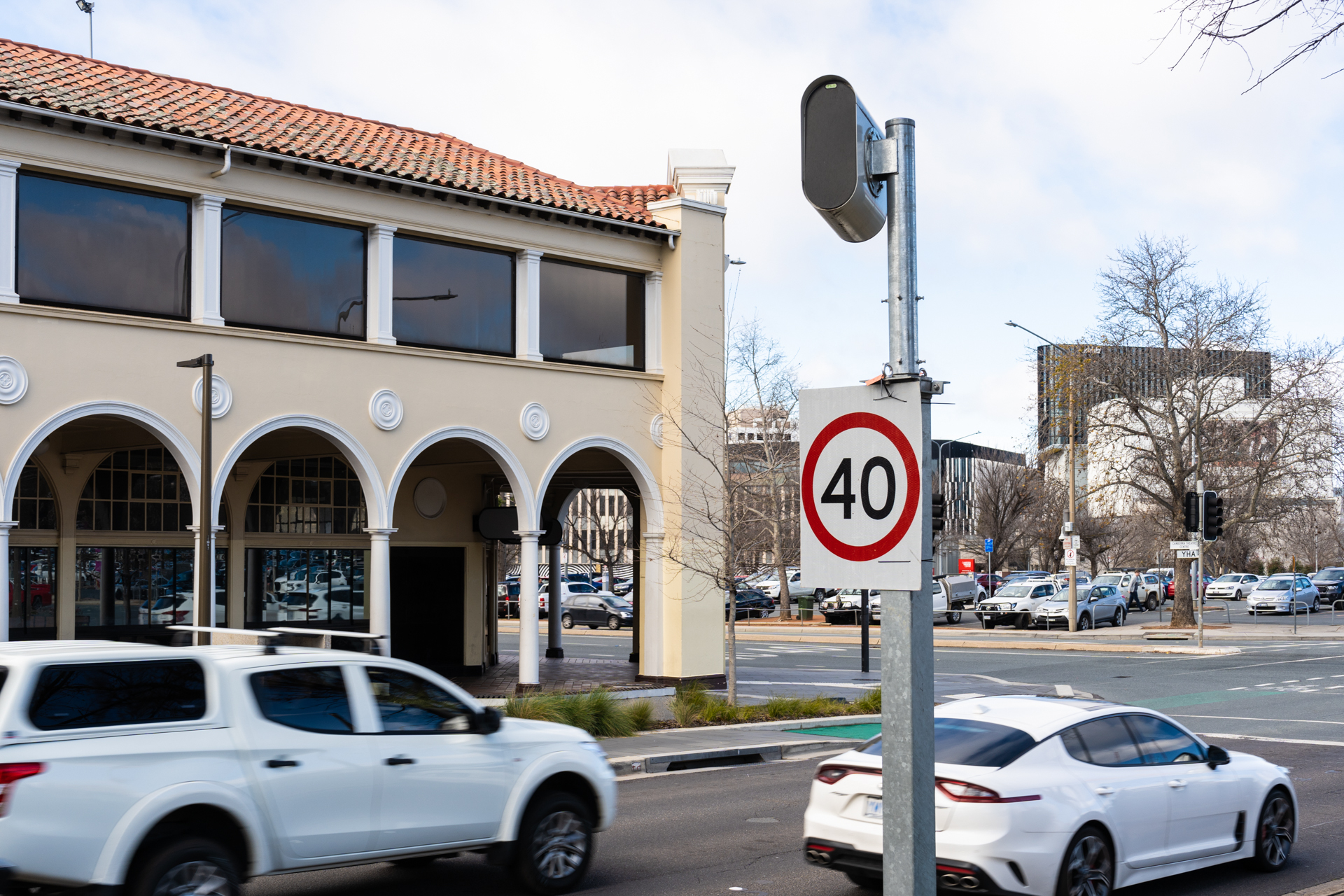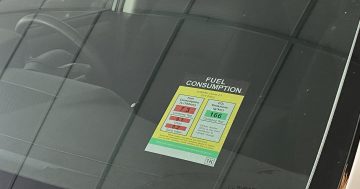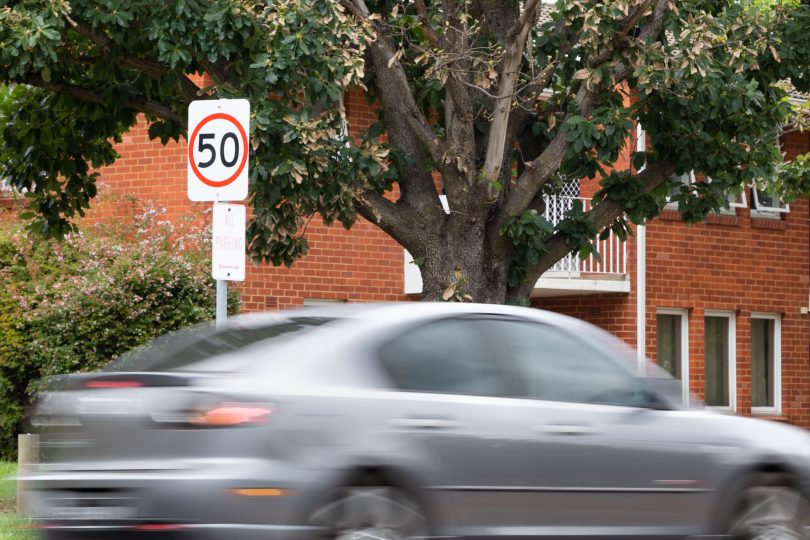
According to ACT Policing, “infringements or warnings can be issued to drivers who exceed the limit for any amount above the posted speed limit”. Photo: Michelle Kroll.
The consequences of speeding can include an expensive ticket to a crash and fatal injuries. Sitting with the needle just a few kilometres over the limit, though, surely that’s harmless?
According to a 2018 survey of Canberra drivers, up to 85 per cent of respondents deemed it acceptable to exceed the limit in a 60 km/h zone by 5 km/h. A similar attitude was found in 100 km/h zones. Less than 20 per cent of respondents believed police adopted a ‘no-tolerance’ approach.
It seems we love a spot of ‘casual speeding’.
Is there a tolerance for speeding?
Is there such a thing as ‘safe speeding’, a line in the sand a motorist has to cross before the ticket pad comes out?
In short, no. According to ACT Policing, “infringements or warnings can be issued to drivers who exceed the limit for any amount above the posted speed limit”.
Once your car is travelling faster than the posted speed limit of the road, you’re classified as speeding. The first penalty level in the ACT backs this up, encapsulating “any speed up to 15 km/h over the limit”. For this, you’ll lose $297 in fines and one demerit point.
But it does seem to be up to the officer to decide whether the consequence takes the form of an infringement or a warning.
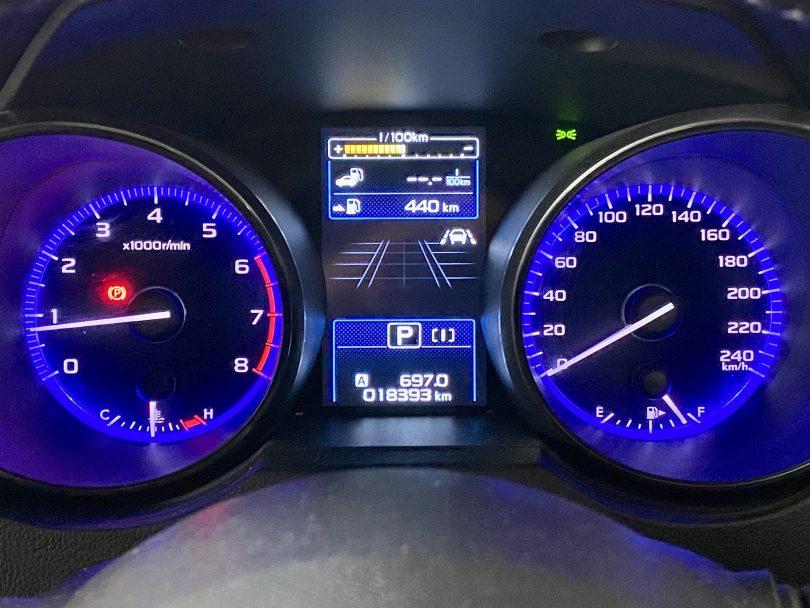
All new vehicles are only allowed to indicate either an accurate reading or one faster than the actual speed. Photo: James Coleman.
What we do know is that the speedo in your car isn’t strictly accurate
National vehicle standards previously stipulated that a car’s speedo could be within 10 per cent of how fast the vehicle was actually travelling. This gave birth to the myth that police won’t bother flicking on the lights and sirens unless you’re 10 per cent over the limit.
The rules changed in July 2007 when all new vehicles were only allowed to indicate either an accurate reading or one faster than the actual speed, and by no more than 10 per cent plus 4 km/h. This means at 100 km/h, a car’s speedo must read 100 km/h or no more than 114 km/h.
This leads many drivers to sit with the needle just over the line, assured in the knowledge they’re not actually speeding. The trouble is, only a GPS will tell them if they are or not.
We also know what happens in theory
According to a chart used by the Queensland Government, the average family car in Australia takes 26 metres to come to a stop from 40 km/h, including reaction time and stopping distance. This blows out to 35 metres at 50 km/h.
Some quick maths on the back of a laptop and we can assume that by going 5 km/h over the limit in a 40 km/h zone, the stopping distance for the average family car increases by four to five metres.
According to data from Transport for NSW, a pedestrian has a 60 per cent chance of surviving an impact at 40 km/h. At 50 km/h, this drops massively to 10 per cent. So it’s safe to say that as little as 5 km/h would make a difference here too.
Of course, we also know speed limits are not set right on the edge of physics – they’re judged by the law of averages. They’re intended as a sweet spot between Mark Weber in an Audi RS3 on a fine day and a Learner driver in an old Ford Falcon on an icy night.
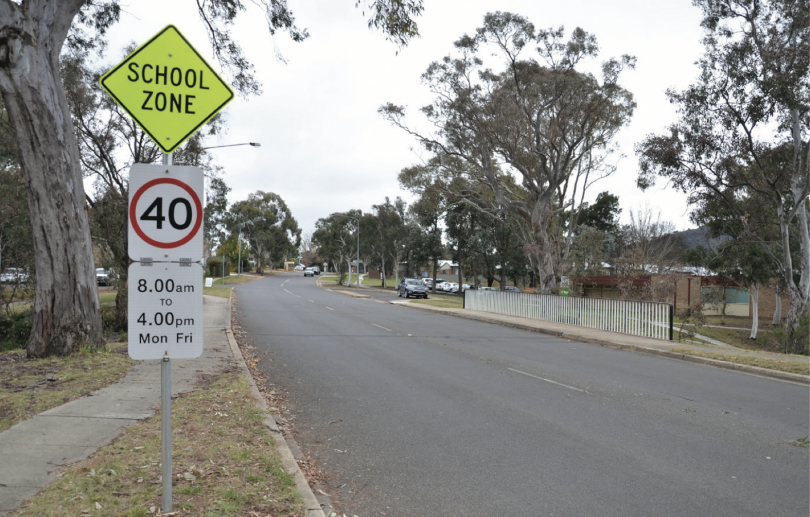
School zones – where motorists often get pinged for speeding. Photo: TCCS.
How many road fatalities in the ACT have speeding to blame?
In 2021, the ACT recorded 11 fatalities. According to a spokesperson from ACT Policing, one of these deaths has been directly attributed to speeding while the others remain the subject of yet-to-be-released coronial findings.
Between 2015 and 2018, speed was identified as a contributing factor in eight fatal crashes, or 21 per cent of all fatal crashes.
“It is well recognised, however, that speeding is one of the ‘Fatal Five’ contributing factors to the vast majority of all fatal collisions on our roads,” the spokesperson said.
The other four factors are not wearing a seatbelt, driving under the influence of drugs or alcohol, intersections, and driver distraction.
In a study of 1,010 Australian drivers conducted by insurance company Budget Direct last year, nearly 40 per cent said the main contributing factor to speeding on the road was not paying attention to the speed. This was followed by urgency to get somewhere faster (33.6 per cent).
Will driving 5 km/h over the speed limit get you places faster?
Hardly. When the NSW Government changed the speed limit of Sutton Road from 100 km/h down to 80, they estimated the extra travel time at 90 seconds. This is roughly the time it takes to get out of the car at the other end.
In other words, just obey the speed limit. It’s cheaper. And much safer.
Original Article published by James Coleman on Riotact.



